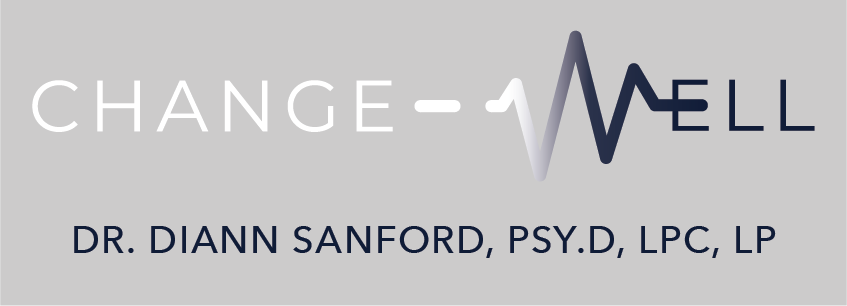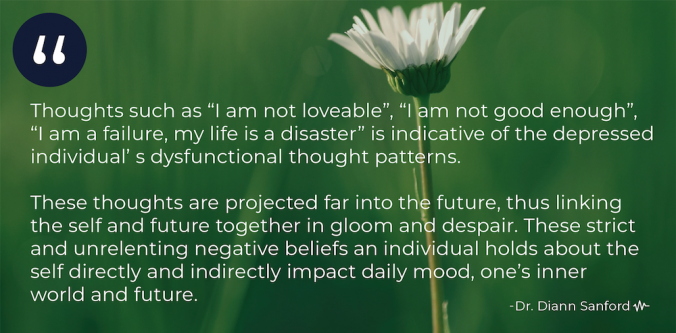Author: Dr. Diann Sanford, Psy.D
 This author explores the life of Aaron Beck, a well-known Cognitive Behavioral psychologist, and his contributions to the Cognitive Behavioral school of thought. First, she will define and give a general introduction to Cognitive Behavioral Therapy, and then narrow to focus on Beck’s work, the supporting research findings and the application of his concepts to her applied practice.
This author explores the life of Aaron Beck, a well-known Cognitive Behavioral psychologist, and his contributions to the Cognitive Behavioral school of thought. First, she will define and give a general introduction to Cognitive Behavioral Therapy, and then narrow to focus on Beck’s work, the supporting research findings and the application of his concepts to her applied practice.
Introduction to Cognitive Behavioral Therapy (CBT)
Cognitive Behavioral Therapy is primarily focused on cognition and behavior. Thinking, deciding, questioning, doing and re-deciding are essential. This psychoeducational model emphasizes a learning process which involves gaining and practicing new skills. Much focus is given to faulty thinking which leads to emotional and behavioral disturbances. The goal of CBT is to learn new ways of thinking and therefore effective ways of reframing and adjusting to difficulties. Concise, directive, collaborative, present-focused, psycho-educational, and proven results are all vital components to Cognitive Behavioral Therapy (CBT).

Albert Ellis, Aaron Beck, Judith Beck and Donald Meichenbaum are all major contributors to this approach (Corey, 2012). Judith Beck directs the Beck Institute which is a research and training center her father, Aaron Beck founded. She coauthored a personality questionnaire and a youth inventory and travels extensively teaching Cognitive Behavioral therapy, sometimes called Cognitive Therapy. She helped found the Academy of Cognitive Therapy and has written over a hundred articles and several books.
Although the past may contribute to the client’s problems the focus of CBT therapy is to find what presently is fueling the faulty ways of thinking. This faulty belief system is the central cause of a client’s issues. Internal dialogue is central behavior. This therapy aims to identify specific, measurable goals and to move directly into the areas that are posing the largest problems through a cooperative client-therapist relationship. CBT practitioners teach clients to care for themselves. Exercises, homework and readings are assigned to clients to prompt quicker therapeutic results (Corey, 2012).
Interventions of Cognitive Behavioral Therapy
CBT uses a variety of techniques: cognitive, emotive and behavioral. These techniques are diverse and individualized for each client. They might include: role playing, imagery (visualization), self-instruction and relaxation (mindful) exercises. Further techniques might involve collaborative reflection and disputing irrational beliefs. One would find Socratic conversations, homework assignments, investigating assumptions, keeping records, making alternate interpretations, stress inoculation training, acquiring new language and changing thinking patterns as other commonly used techniques in CBT (Corey 2012).
The whole process of CBT, its techniques, interventions and homework is designed for each client. If a client is struggling with assertiveness he/she might be asked to read the book Asserting Yourself authored by Bower and Bower, or Patricia Evan’s book about Controlling People: How to recognize, understand and deal with people who try to control you. If the client was displaying the signs of hidden anger the therapist might prescribe the book Overcoming Passive-Aggression by Murphey and Oberlin.
One contribution is catastrophizing (Clark & Beck 2010). This approach is accomplished by confronting cognitive avoidance and encouraging the client to face the imagined catastrophe and its associated anxiety. The CBT therapist asks “What is the worst thing that can happen? What is so bad about that?”, then together, the client and therapist problem solve.
If possible, actually imagining the catastrophe is preferred along with its tragic consequences. During this activity, the counselor searches the client’s responses to locate rescue strategies, measures the anxiety level and determines the client’s level of insight about the irrational nature of the fear. Writing can also be used in this intervention when there is a propensity for cognitive avoidance. Next, a best case outcome would be developed as a way of reframing the most negative outcome, and then a more middle-of the –road more likely outcome is discussed in detail and developed in writing (Clark & Beck, 2010).
Together, the counselor and client work on an action plan to cope with the more probable outcome. In the future, whenever the client starts to castrophize he/she would be encouraged to refer to and work on this action pan. This intervention aids the client in his or her restructuring of self-defeating cognitions (Clark & Beck, 2010). Self-efficacy (assurance in one’s abilities) increases, confidence for dealing with future problems increases and the information processing of safety and rescue features for the client in high anxiety situations improves (Clark& Beck, 2010).
Medical researchers are connecting the mind (cognitions), the body and health (Karen, Haffen, Smith, Frandsen, 2006). Researchers are teaming up with immunologists, physiologists, psychiatrists, psychologists, and neurobiologists to explore the blurred line between the mind, body and health. Evidence suggests that certain negative psychological states seemingly brought on by adversity may actually cause the immune system to falter. (Karren, Haffen, Smith, Frandsen, 2006).
Furthermore, repressions of emotions have been linked very closely with cancer. Many researchers are considering it a valid risk for cancer (Bringham, 1977). Many CBT interventions are built around giving a client a greater sense of integrity/personal control such as: meditative breathing, progressive muscle relaxation, mindfulness, imagery, quiet contemplation, and guided imagery, visualization, practicing forgiveness, and building support when ill (Bringham, 1977).
In summary, collaboratively, CBT practitioners facilitate a course of action that is specific, proven, brief and measureable (Corey 2012). These CBT therapists promote growth, freedom, possibilities and hope for their clients as they co-construct (client and therapist) a future of choice (Corey 2012).
Aaron Beck: Personal and Professional Life
Aaron T. Beck was born on July 18, 1921 in Rhode Island. He was the youngest of a family with five children. He graduated in 1942 from Brown University. There he was an exceptional student and continued his studies at Yale Medical School and earned that degree in 1946. He married Phyllis Beck, the first woman judge on the appellate court of the Commonwealth in Pennsylvania in 1950, together they had four children. His daughter, Judith Beck, is president of the Beck Institute that they formed together in Philadelphia in 1994 .
In the 1960’s Aaron Beck practiced psychoanalysis. He was a psychiatrist at the University of Pennsylvania working with patients while also researching depression. To his surprise he found that his research did not support his psychoanalytic concepts of depression. Instead, he discovered that depressed individuals generated a continuous cascade of negative thoughts. During this time, he developed Cognitive Therapy (CT). This therapy is also known as Cognitive Behavior Therapy (CBT). He pioneered research in depression and expanded the application of cognitive therapy to a wide variety of anxieties, disorders and personality disorders. He founded the Beck Institute for Cognitive Behavior Therapy and helps therapists and patients around the globe.
Aaron Beck developed the Beck Depression Inventory, the Beck Hopelessness Scale, the Beck Scale for Suicidal Ideation, and other assessments. The Beck Scale for Suicide Ideation identifies clients who entertain suicide thoughts. This scale uses five screening items and he recommends that this scale be used with other assessments, and not alone. The Beck Hopelessness scale measures intent and ideation, and has norms for suicidal clients. Beck’s Depression Inventory (BDI) is commonly used by health practitioners. The most recent version is the Beck Depression Inventory – II, it was revised to align with the DSM IV. It is easy to administer as it contains 21 items and takes clients only a few minutes to complete. With each item there are four choices that increase the level of severity; the outcome is a depression score. This instrument has been found to have high validity. Beck also created a depression inventory for youth, Beck Depression Inventory for Youth (Whiston, 2013).i
He has authored many books among them are: The diagnosis and Management of Depression, Depression: Causes and Treatment, Cognitive Therapy of Depression, Love is Never Enough, Cognitive Therapy of Substance Abuse, The Integrative Power of Cognitive Therapy, and in 2012 he authored the Group Cognitive Therapy of Addictions (“Beck,” 2017). In 1997 Beck proposed three factors that fueled depression: negative self-schemas, the cognitive triad, errors in logic (“Aaron Beck,” 2017).
Beck’s Methodology
Beck believed that individuals were not passive victims of their past but were actively moving towards goals that were important to them. He thought distress happened when our goals were threatened. He developed a Hierarchical Structural Organizational Model that identified four levels of thought: automatic thoughts, intermediate beliefs, core beliefs and schemas. Automatic thoughts are the immediate self-talk, the private conversation, the inner dialogue. They connect an emotion with a situation, and the emotion is a reflection of the meaning the individual gives to the situation. Absolute values and attitudes, such as “working hard pays off” or “lazy people have the best life” influence a person’s automatic thoughts. Core beliefs start in child hood and reflect a person’s view of the future, people and their world, such as “I am capable”, “I am a failure”, “I am not loveable”, “I am bad” (Henderson & Thompson, 2011).
Counselors identify the patterns of core beliefs and form hypothesis to be shared with the client as the time arises. During CBT counseling, patients begin to question their core beliefs and consider changing their core beliefs and begin to reject the idea that their core beliefs are absolute truth. Schemas integrate these core beliefs within the mind and involve emotions, thoughts and actions. Schemas can be the mental filters used to perceive the world, and can be responsible for our expectations of our world. Schemas are structures within the mind. Individuals process information by using schemas (Henderson & Thompson, 2011).
Danger, Loss cognitive schemas, anger and joy are emotional schemas (they involve the core emotions), motivational schemas are to approach or avoid (core impulses). Smiling, fidgeting or tearing up are behavioral schemas while physiological schemas are the body’s sensory systems, motor and autonomic systems. Our bodily systems have overlapping components for example with anxiety schemas involving the motivation to escape, the behavior of fleeing and the emotion of fear may interplay. Our cognitive distortions occur because the information we receive is processed and converted to fit our original schema, in order to keep our original schemas unharmed (Henderson & Thompson, 2011).
Beck’s Cognitive Triad
Aaron is focused on the content of the depressive individual’s way of thinking. He promotes a cognitive triad as a pattern for depression. The triad has three components: the client holds a negative view of self and blames personal troubles on personal inadequacies without considering other explanations. Additionally the depressed individual believes he/she lacks the essential ingredients to bring about happiness in his/her own life. The second component to this triad is the negative interpretation of the personal world (Clark & Beck, 2010).
The depressed individual focuses on facts that align with his/her world view, Beck calls this selective abstraction. The third component of the triad involves gloomy projections about the future. This client expects the present difficulties to follow them their entire lives. This negative expectation is so compelling that even if success is experienced; failure is expected the next time. The cognitions/emotions of depressed individuals seem to revolve around a perceived irreversible loss and the feelings that follow (Beck, 1995). These undesirable views of the self, the world and the future cause deficiencies in problems solving memory and perception, as ruminating, unwanted thoughts take over the mind. These thoughts occur spontaneously and automatically. They persist even in the face of disputing evidence and cause depression (Cervone & Pervin, 2013).
Beck’s Self Schemas, Errors of Logic and Depression Inventory
Beck introduced the idea of a negative self-schema, a set of beliefs and expectations about oneself that is damaging. He believed experiences in early life might contribute to these views of self, such as death of a parent, parental rejection, criticism, over-protection, neglect or abuse, bullying, the death of a parent or sibling, or other traumatic event. Individuals that possess these negative self-schemas tend to deliberate on the negative aspects of a situation and their abilities and ignore the relevant positive information, thus they make logical errors (Henderson & Thompson, 2011).
Beck identified many illogical patterns of thinking that causes anxiety and depression. These were all considered to be self-defeating illogical thinking processes: arbitrary interference, selective abstraction, magnification, minimization, over-generalization, and personalization (“Aaron Beck,” 2017). Researchers in the 1980’s and 1990 have delivered much empirical evidence that was consistent with Beck’s models. Depressed individuals appeared to have a bias towards pessimism, and have more readily accessible negative self –constructs.
Supporting Research
Cognitive Behavior Therapy has been very useful for helping individuals change their cognitions. CBT can easily be applied to a wide range of clients and problems. It has been extensively used to treat stress management, depression, anxiety, relationship issues, skill training, substance abuse, assertion training, eating disorders, panic attacks, performance anxiety and social phobias (Corey 2012, p. 445). Cognitive Therapy of Anxiety Disorders (Clark & Beck, 2010) outlines strategies for treating a wide range of anxiety which includes: panic disorder, social phobia, generalized anxiety disorder, obsessive-compulsive disorder, and post-traumatic stress disorder.
Researchers are showing how our thoughts and emotions contribute to our healing and prevention of illness. Techniques and interventions that Blair Justice recommends Who Gets Sick are cognitive coping, increasing self-efficacy, hypnosis, powerful words, relaxation techniques, the use of pictures/images, new internal dialogue and a sense of cognitive control that offers protection, improvement and often healing in the face of illness (Justice, 1988).
Likewise, Brigham (1996) discusses the clinical applications of imagery in Behavioral Medicine. He too shows the significance of CBT techniques and interventions such as laughter, noncompetitive play, high level awareness, expressive therapies, therapeutic touch and the applications of imagery for getting well. He extended the use of imagery all through the recovery of an illness by teaching the client changing perceptions and new assertive communication for survivorship (Bringham,1996).
Medical researchers are connecting the mind (cognitions), the body and health (Karen, Haffen, Smith, Frandsen, 2006). Researchers are teaming up with immunologists, physiologists, psychiatrists, psychologists, and neurobiologists to explore the blurred line between the mind, body and health. Evidence suggests that certain negative psychological states seemingly brought on by adversity may actually cause the immune system to falter. (Karren, Haffen, Smith, Frandsen, 2006).
Furthermore, repressions of emotions have been linked very closely with cancer. Many researchers are considering it a valid risk for cancer (Bringham, 1977). Many CBT interventions are built around giving a client a greater sense of integrity/personal control such as: meditative breathing, progressive muscle relaxation, mindfulness, imagery, quiet contemplation, and guided imagery, visualization, practicing forgiveness, and building support when ill (Bringham, 1977).
Cognitive Behavior Therapy (Beck, 1995) has been used to treat many disorders such as: panic attacks, performance anxiety, social phobias, stress management, substance abuse, assertion training, eating disorders, depression and skill training. It is particularly beneficial to a wide range of clients and problems. For instance in a study of oncological patients, CBT therapy was given to a group of 26 cancer patients. Preliminary assessments were given and adaptation strategies were used, and the patient and therapist often planned together. The therapist actively supported changing destructive core beliefs. CBT was shown to be effective in improving a positive attitude and establishing a transcendent orientation (Faretta, Borsato, Civilotti, Fernandez, & Pagani, 2016).
Several randomized controlled trials (RCTs) have shown cognitive behavioral therapy as a very effective method for treating MDD. It has proven efficacy with this population and shows to be successful with individuals, adolescents, adults and groups (Kress & Paylo, 2015). There has been success with treating school children with academic concerns and who have witnessed trauma with cognitive interventions (Henderson & Thompson, 2011).
True to the evidence-based theory of CBT, Clark & Beck (2010) give an analysis of the research verifying their work and approach. They review many of CBT’s unique contributions to psychological well-being. In summary, collaboratively, CBT practitioners facilitate a course of action that is specific, proven, brief and measureable (Corey 2012). These CBT therapists promote growth, freedom, possibilities and hope for their clients as they co-construct (client and therapist) a future of choice (Corey 2012).
CBT Applications to Applied Practice
Research shows the importance of the view of the self and the view of the future when considering depression. Thoughts such as “I am not loveable” is indicative to the depressed individuals that “no one will ever love me” as these dysfunctional thought patterns are projected far into the future. The self and the future are linked. The strict negative beliefs an individual holds about himself or herself directly or indirectly impacts the mood, the inner world and the future (Cervone & Pervin, 2013).
True to Cognitive Behavior Therapy, this writer does not delve heavily into the past unless it directly poses a threat to the present. This CBT approach to counseling supports her view that personality is not fixed. Personality is influenced by life experiences, our environment and others. Therefore, it can be systematically altered (Corey, 2012). She believes as Beck does that each disorder has its own distinctive pattern of beliefs. In depression the beliefs would be about failure and negative self-worth, research has supported this concept and cognitive therapy has expanded to include anxiety, personality disorders, drug abuse and martial difficulties.
Socratic dialogue, collaboration and challenging irrational beliefs are common practices of mine. Self- evaluative checklists are part of my sessions. This clinician regularly engage in the strategies of skill reinforcements, establishing contracts, modeling, rehearsing, coaching, giving feedback, exploring homework, cognitive restructuring, problem solving, experiential activities, social skills training, assertiveness, stress management and mindful-ness which are all hallmarks of cognitive behavioral therapy.
As she steps back and looks holistically at the presenting issues, she tailors her approach to fit each client, using Beck’s feedback and progress checks; she makes adaptations as needed. Holistically, she considers her clients and their unique circumstances, as she and client/clients embark on a discovery to dislodge negative schemas and begin a journey to change personal views of self, world and future (Corey, 2012, ).
“Thoughts such as “I am not loveable”, “I am not good enough”, “I am a failure, my life is a disaster” is indicative of the depressed individual’ s dysfunctional thought patterns. These thoughts are projected far into the future, thus linking the self and future together in gloom and despair. These strict and unrelenting negative beliefs an individual holds about the self directly and indirectly impact daily mood, one’s inner world and future.”
– Dr. Diann Sanford, Psy.D.
- Aaron Beck – Cognitive Therapy. (2017). Retrieved from https://www.simplypsychology.org/
- Beck, S. J., (1995) Cognitive Therapy: Basics and Beyond. New York, NY: Guilford Press
- Bower, A.S., Bower. H. G (1991). Asserting Yourself, A Practical Guide for Positive Change, updated edition. Cambridge, MA: the Perseus Books Group/De Capo Life Long Books.
- Brigham, D.D., Davis, A. & Cameron-Sampey, D. (1996). Imagery for Getting Well: Clinical Applications of Behavioral Medicine. New York, New York: W. W. & Norton & Company.
- Cervone, D., & Pervin, L. A. (2013). Personality Theory and Research (12th ed.). Hoboken, N.J.: John Wiley & Sons.
- Clark, A. D., Beck T. A., (2010) Cognitive Therapy of Anxiety Disorders, Science and Practice.
- New York, New York: The Guildford Press
- Corey, G. (2012). The Theory and Practice of Counseling and Psychotherapy, ninth edition. USA: Brooks/ Cole, Cengage Learning.
- Evans, P. (2002). Controlling People, How to Recognize, Understand, and Deal with People Who Try to Control You. Avon, MA: Adams Media
- Faretta, E., Borsato, T., Civilotti, C., Fernandez, I., & Pagani, M. (2016, November 3). EMDR and CBT: A Comparative Clinical Study with Oncological Patients. Journal of EMDR Practice and Research, 10, 215-227. http://dx.doi.org/10.1891/1933-3196.10.3.215
- Henderson, D. A., & Thompson, C. L. (2011). Counseling Children (8th ed.). Belmont, CA: Cengage Learning. Karren, J. K., Hafen. Q. B., Smith, N.L., Frandsen, J. Kathryn. (2006). Mind/Body Health, The
- Effects of Attitudes, Emotions, and Relationships, Third Edition. New York, New York: Pearson Education, Inc., publishing as Benjamin Cummings.
- Kress, V. E., & Paylo, M. J. (2015). Treating Those with Mental Disorders: A Comprehensive Approach To Case Conceptualization and Treatment (1st ed.). New York, N.Y.: Pearson.
- Justice, B., (1988). Who Gets Sick. Los Angeles, CA: Jeremy P. Tarcher, Inc. in cooperation with Peak Press.
- Murphy, T., Oberlin H. L., (2005). Overcoming Passive-Aggression, How to stop Hidden Anger from Spoiling Your Relationships, Career and Happiness. Cambridge, MA: Da Capo Press.
- Sue, D. W., & Sue, D. (2013). Counseling the Culturally Diverse, Theory and Practice (6th Ed.). Hoboken, N.J.: John Wiley & Sons.
- Whiston, S. C. (2013). Principles & Applications of Assessment in Counseling (4th ed.). Belmont, CA.: Brooks/Cole Cengage Learning.

